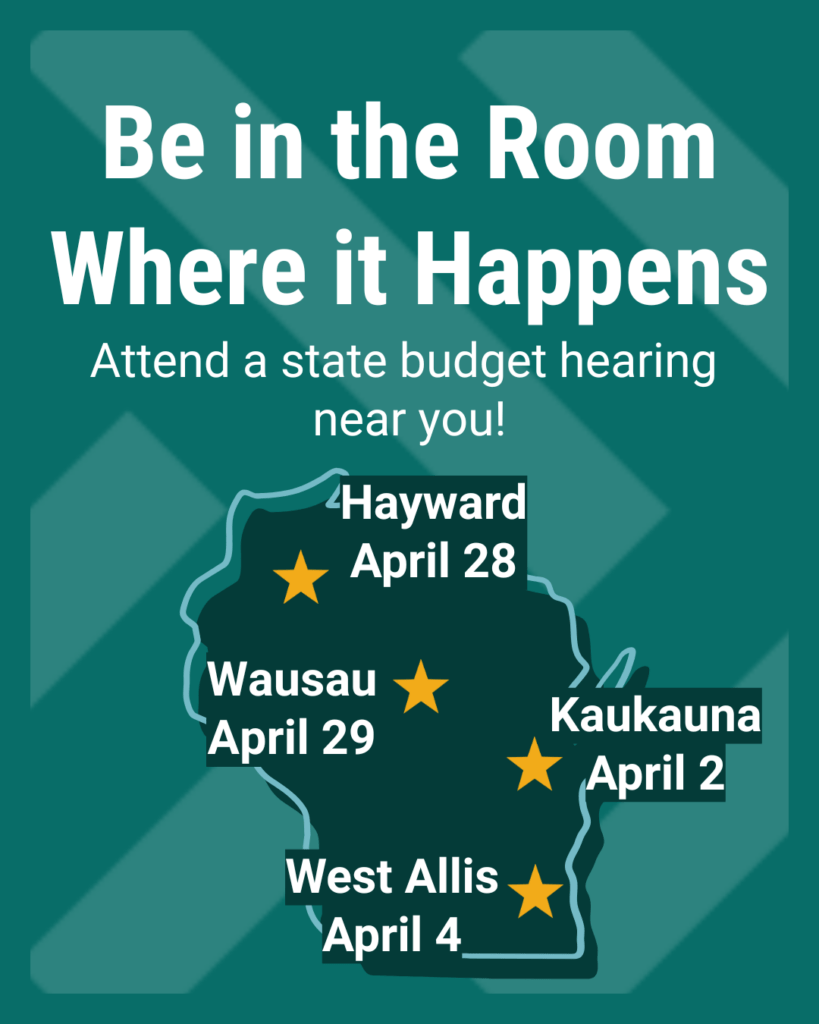Tonight, Governor Walker will deliver his 2018 State of the State address. Traditionally, Governor Walker hasn’t used the State of the State address to focus on the well-being of the state’s children—although he should, given that today’s children will grow up to be tomorrow’s workers and leaders. If we want Wisconsin to have a healthy, well-educated workforce that is able to compete in a global economy, then we need to make investments now in creating excellent schools, making communities safer, and providing access to affordable, high quality health care for every child in the state.
The State of the State address gives Wisconsin residents the opportunity to hear about the Governor’s priorities for Wisconsin. And it allows us to decide whether the Governor is prioritizing investments in kids and families—or hand-outs and tax cuts to people and corporations who are rigging the system.

Make no mistake, Wisconsin has a long way to go when it comes to investing in our children. The well-being of too many kids in our state is far from what it should be, especially for our kids of color.
- Almost 200,000 Wisconsin children live in poverty, or 1 out of 6 children in the state. Growing up in poverty can affect children’s brains in ways that are similar to the effects from abuse, with harmful brain changes starting even in infancy. Those changes can have long-lasting effects on children’s impulse control, decision-making, and educational achievement.
- Not every child in Wisconsin has the same opportunity to succeed. Racial inequities in Wisconsin remain stark and are virtually unacknowledged at the state policy level. The share of Wisconsin children of different races who live in poverty exposes the severity of those disparities: Black children and American Indian children in Wisconsin are more than four times as likely to live in poverty as White non-Hispanic children, and Hispanic children are nearly three times as likely as White children.
- A typical Wisconsin household earns significantly less than before the recession, meaning that more kids are in families that are struggling to climb the economic ladder. Median household income declined $1,700 between 2007 and 2016.
- About 45,000 Wisconsin children were uninsured in 2016 and lacked access to timely preventative health care.
- There has been an alarming decline in the number of children receiving subsidized child care, with declines in some rural counties of over 50%. That means fewer families have access to affordable child care, making it harder for parents to work and support their families.
Due in part to investments that forward thinking leaders have made in the past, there are some bright spots for Wisconsin’s children:
- Wisconsin preschoolers have broad access to high-quality public four-year old kindergarten programs, which help students build solid foundations for later success in school. Only three states have a higher share of four-year olds enrolled in pre-kindergarten programs than Wisconsin. Wisconsin’s leadership in early education dates all the way back to 1856, when the first kindergarten in the country was established in Watertown, Wisconsin.
- Fewer Wisconsin teens are getting into trouble with the law. In part, due to the success of diversion programs and decreased recidivism, the number of juvenile arrests has fallen by more than half since 2009.
- Fewer Wisconsin teenagers are having babies. The teen birth rate in Wisconsin has fallen for seven years in a row, and is now less than half of what it was in the 1990s. That means fewer babies are born to young parents who may be unprepared financially and emotionally to give their children what they need to succeed.
Some of these facts pose significant challenges for Wisconsin’s future, while others prove that investments in children, families, and communities can improve the well-being of kids. There is no doubt that if we make children a high priority, we can make significant progress in improving the state of every child, every family, and every community in Wisconsin. It is up to our state lawmakers and Governor to lead us toward that future.
Ken Taylor, Executive Director



